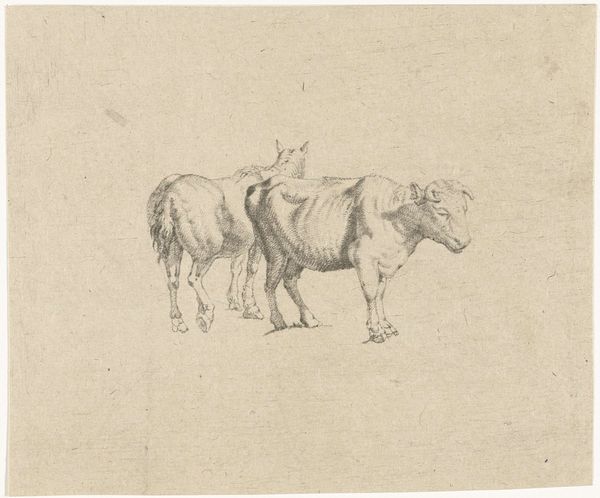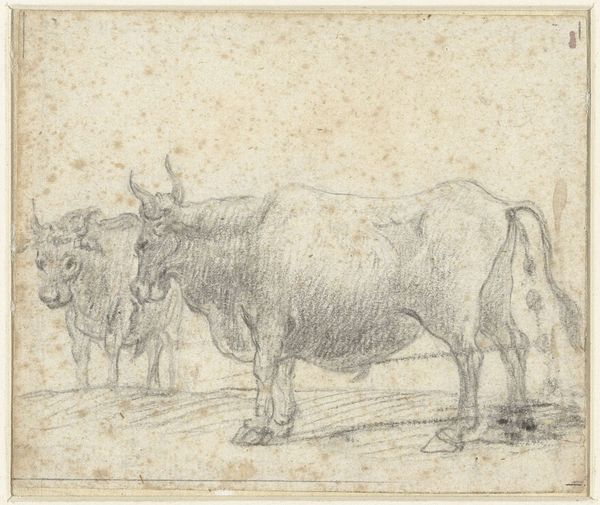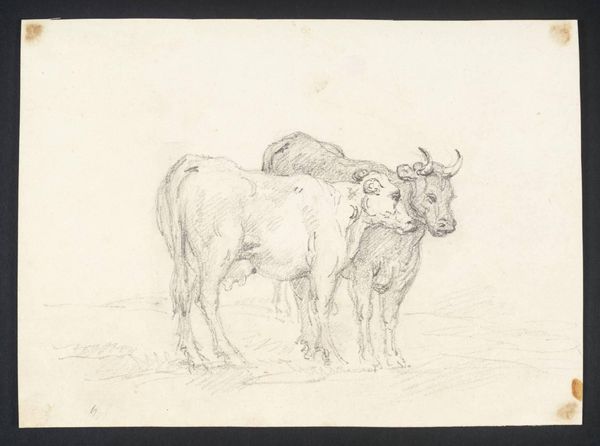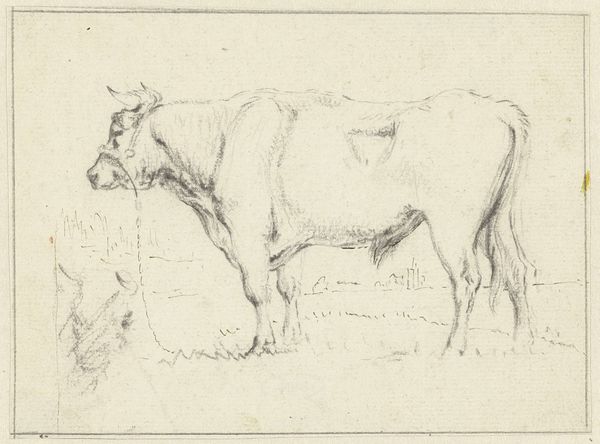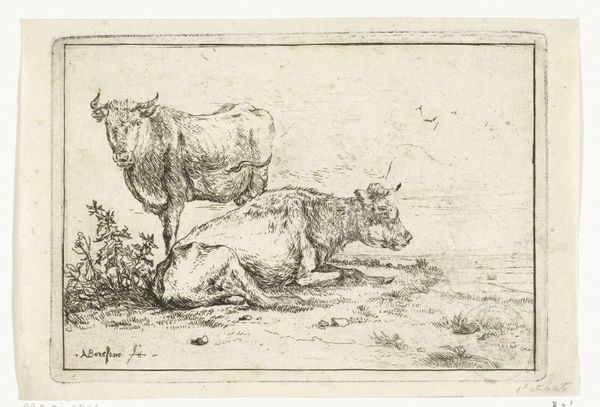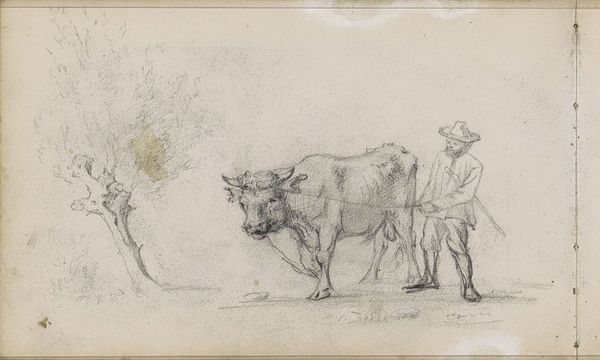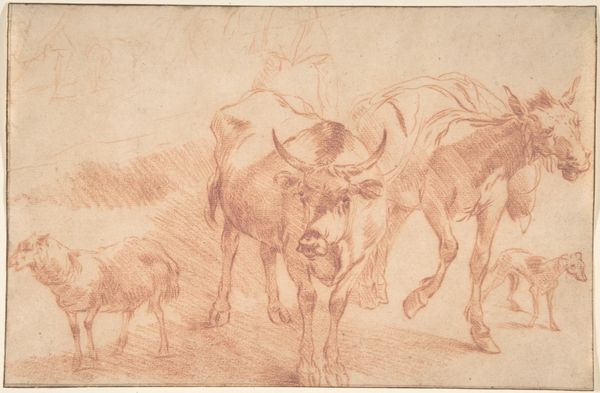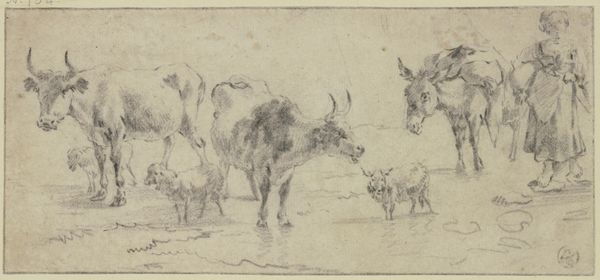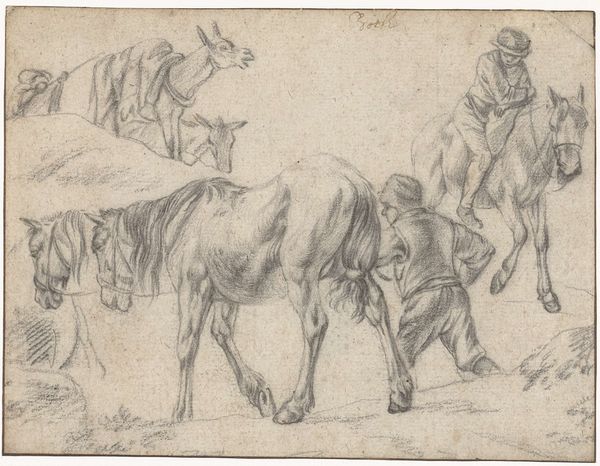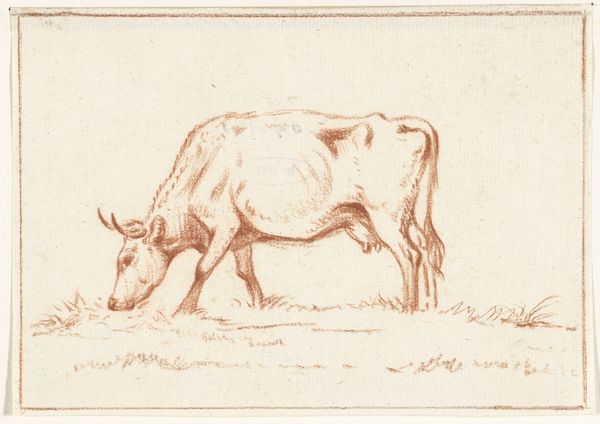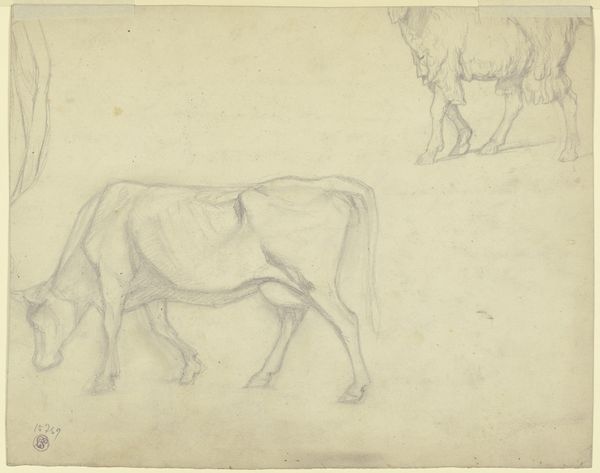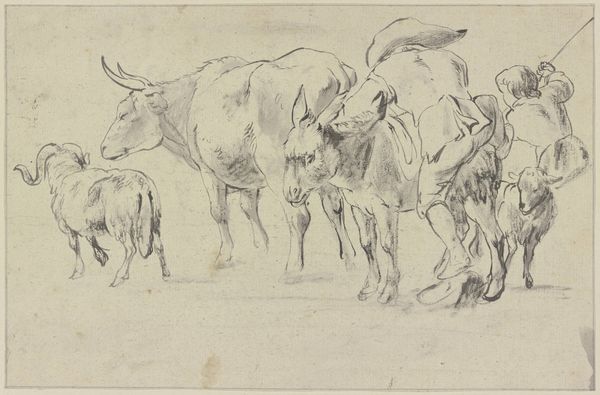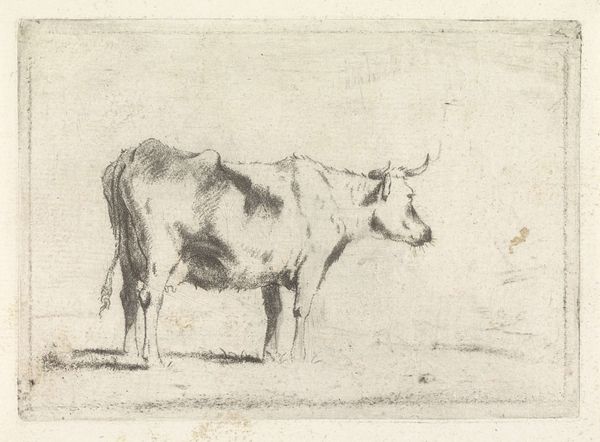
drawing, pencil
#
drawing
#
baroque
#
pencil sketch
#
landscape
#
figuration
#
pencil
#
genre-painting
#
realism
Dimensions: height 88 mm, width 123 mm
Copyright: Rijks Museum: Open Domain
Editor: Here we have "Two Cows and a Herdsman," a pencil drawing by Claude Lorrain, sometime between 1635 and 1645. The figures are so simply rendered. What strikes me is how peaceful it seems, a slice of everyday life. How do you interpret this work, beyond its surface tranquility? Curator: It’s interesting you pick up on the ‘everyday’ aspect. I see it as Lorrain engaging with a romanticized version of rural life, a commentary, even, on the social hierarchies of his time. These idyllic scenes often served to reinforce a certain social order, portraying labor as inherently harmonious. Consider the power dynamics – the herdsman, presumably a lower-class figure, in service to unseen landowners, the ultimate beneficiaries of this pastoral scene. What does this imply about Lorrain's position within that hierarchy, do you think? Editor: That's a perspective I hadn't considered. It complicates the image quite a bit. Is the 'peacefulness' then a kind of… propaganda, almost? Curator: Perhaps "propaganda" is too strong a word, but it's crucial to examine the function of these images within their historical context. We must always consider whose interests are being served by the art we consume. To what degree does Lorrain's landscape idealize labor in order to subtly perpetuate socioeconomic norms? Does that lens affect how you appreciate the drawing? Editor: It definitely does. It makes me question the idea of the 'simple life' that I initially saw. I learned how important it is to think about the social context of art. Curator: Precisely! Questioning these representations allows us to have a richer understanding of the past, and importantly, to think critically about how we view our world today.
Comments
No comments
Be the first to comment and join the conversation on the ultimate creative platform.
